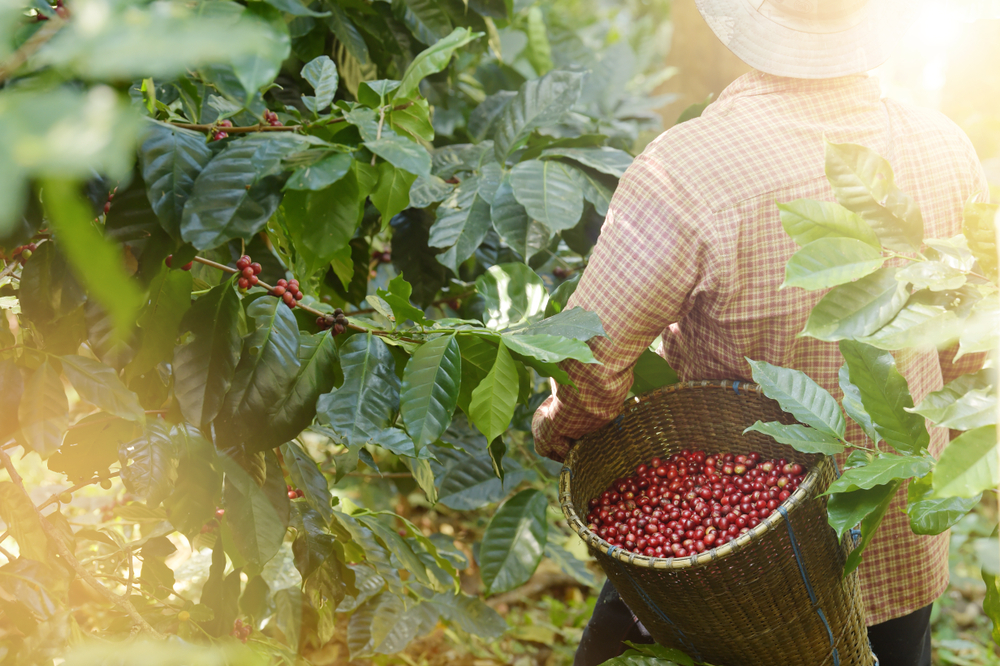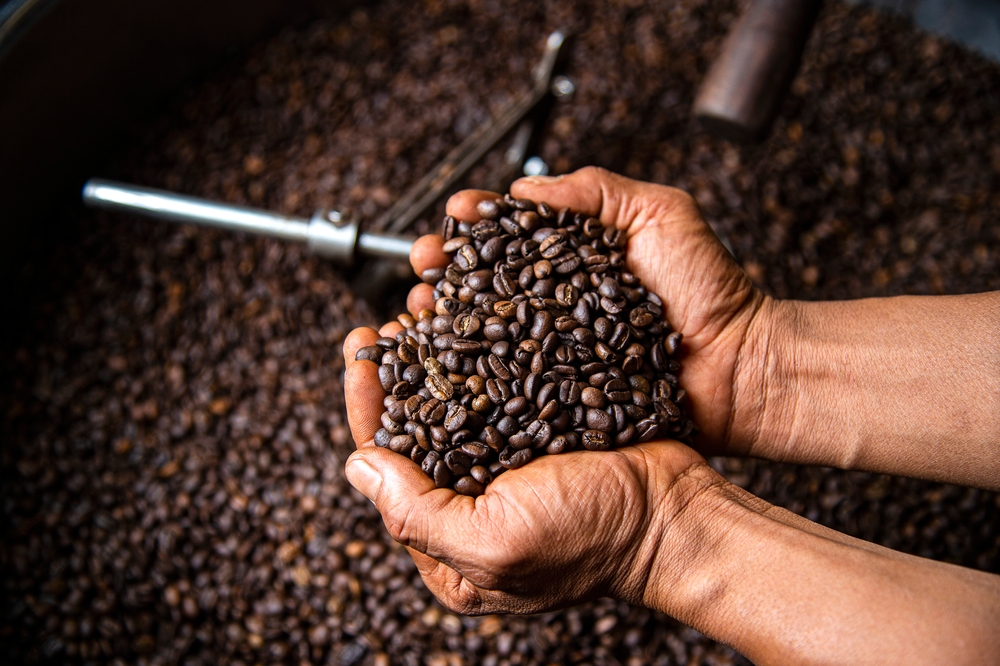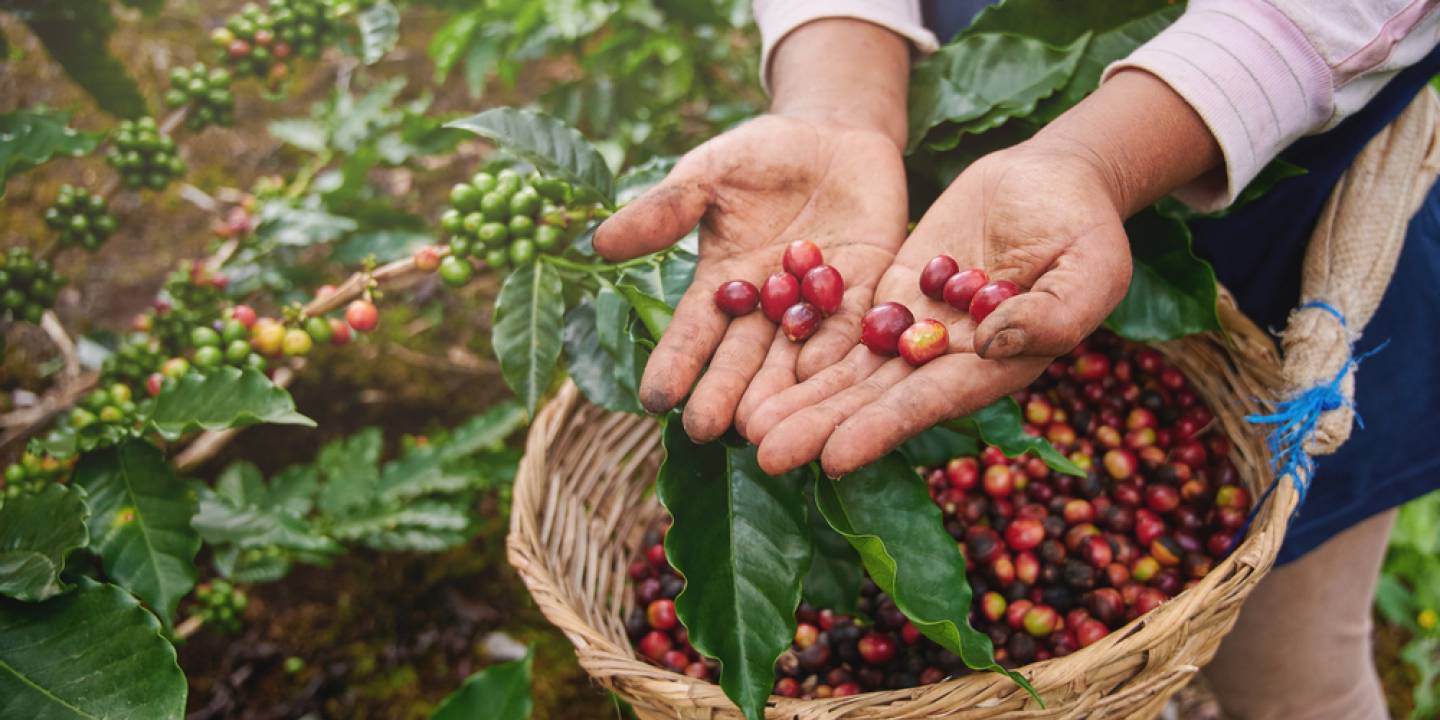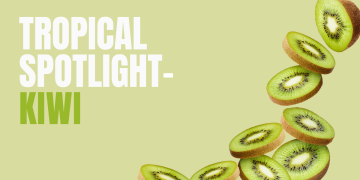According to Fairtrade, 'around 125 million people worldwide depend on coffee for their livelihoods' with '80% of coffee being produced by 25 million smallholder farmers'.
Coffee is a complex process and undergoes several processes, involving a chain of hundreds of people. Each step, from the harvest to the final processing stage has an impact on the flavour.
1. Planting the seeds
Coffee seeds are planted often when the weather is wet to help the roots become firmly established. It can take anywhere between three to four years after planting for coffee plants to bear the cherries. They start by producing white blossoms and around eight months later, coffee cherries will usually appear. The cherries contain the coffee seeds or more commonly recognised as the coffee beans. Each cherry usually contains two beans. Occasionally, in around 5% of coffee cherries, there is just one seed, this is known as peaberry.
2. Harvesting
Once the coffee cherries begin to turn red, they are ready to harvest. There is usually one major harvesting period between October to December. However, in countries such as Columbia, there is also a secondary crop, which usually occurs between April to June.
Most coffee beans are harvested by hand, in which they can be strip picked or selectively picked. The topography of certain regions means machine harvesting is not always possible owing to the steep terrain. However, in some places such as Brazil, where the land is flat, they can be machine harvested.
Strip picking removes all the cherries from the trees, including the cherries which may still be green and underripe. However, if the cherries are harvested too green, the coffee will be sour, and if they are overripe, the beans may ferment and spoil the flavour of the final brew.
As not all coffee beans mature at the same time, selective picking ensures that only the red cherries are harvested, and any unripe fruit is left to further develop. This is usually the preferred method for the finer Arabica variety, but it is a more labour intensive and a costly process.

3. Processing
Wet Process
Once the fruit has been harvested, it must be processed quickly to prevent oxidisation as it can impair the flavour. Coffee that uses the wet processing method is known as washed coffees.
The cherries are pulped to remove the skin (spermoderm), the papery hull (endocarp) and the pulped fruit (mucilage) that surrounds the beans before they are later milled to remove the rest of the surrounding layers.
The beans are immersed and soaked in water. This causes the unripe fruit, cherry skin and pulp to float and the beans to sink to the bottom. This method is said to provide more aroma but less body to the final coffee. The beans are then fermented between eight to 36 hours.
Dry Method
An alternative method is a dry method, also known as unwashed or natural coffee. It is an old method and often used in countries where rainfall may be scarce. It is a much cheaper alternative to the wet process; however, the final aroma can be impacted, creating a milder coffee.
This stage does not require the pulp to be removed before drying. The harvested cherries are laid in the sun to dry out. The cherries are frequently raked to dry evenly and prevent any deterioration caused by bacteria. Depending on weather conditions, drying can take between 10-30 days, but in certain cases, they can also be dried by machine. They are dried to 10-12% moisture content.
After the cherries are dried, they are then hulled in which the outer layers of the bean are discarded. There is also the semi-dry method in which uses a combination of both methods.
4. Milling and hulling
Hulling is part of the milling process and is used to remove the parchment skin (pergamino) and the fruit residue. It can be performed wet or dry and is performed by a machine.
5. Polishing / Ageing / Decaffeination
Polishing, along with ageing and decaffeination are further optional steps used in coffee processing. Polishing is used to remove any silver skin left. The beans can also be aged, from six months up to three years. Under the right circumstances, this can give coffee a range of different flavours. Coffee can also be decaffeinated so that consumers can still enjoy the taste of coffee without the effect of caffeine.
6. Cleaning and sorting
Cleaning and sorting can also be an extra step, especially in finer coffees. This is when miscellaneous items such as debris from the land are removed from the coffee beans. The beans are also sorted by size and density.
7. Grading and cupping
Coffee grading is a process used to determine higher quality coffee and higher prices. The beans are judged on their visual appearance through to their flavour on a scale of one to five. Their size, where they were grown, altitude, harvesting method and any imperfections may all be taken into consideration.
Coffee cupping, also known as tasting, involves assessing the taste and aroma of brewed coffee. The body, sweetness, acidity and flavour as well as aftertaste are assessed.
8. Roasting the beans
The beans are then roasted, which causes chemical reactions inside the beans to occur. The starches turn to sugar, the acidity weakens, and the beans become oily, which develops the aromatic flavour.

9. Grinding and brewing
The final stages are grinding and brewing. The beans are ground into various levels of fineness. The finer the coffee beans, the smoother the coffee will be. Coffee is then brewed when hot water is poured onto ground coffee beans and then allowing them to brew.
Craft precision. Superior quality. Intricate flavour
We proudly source our coffee from all the major producing countries and regions, crafting superior profiles using the best Arabica beans. Whether it’s a nitro-infused RTD cold brew or a unique coffee application, we know what it takes to win in a crowded and competitive marketplace.
When partnering with our customers, our experts craft brewed solutions that account for specific taste profile, origin and labelling. Working directly with the world’s leading coffee suppliers, we offer all major coffee certifications, giving our customers peace of mind that our products don’t just taste good, but they do good too.




